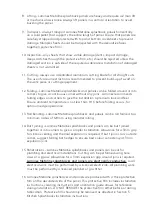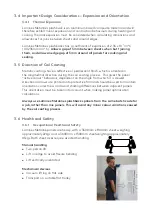
3.1.3 Fabrication Type – Folded Rolled Edges
Preferred Method:
Folded rolled edges give a completely encapsulated finish to the sheet, which hides
the core of the panel from view.
3.1.4 Fabrication Type – Finished Corner Details
Where the sheet requires two rolled edges to meet on corners, the following
method is used to allow for the edge folds to encapsulate the core:
X
Y
X
Y
X - 6mm
Y - 6mm
X - 6mm
Back Face
Front Face
Y - 6mm
Back Face
Front Face
X + 6mm
Back Face
Front Face
Y + 6mm
Back Face
Front Face
X - 6mm
Y - 6mm
Back Face
Double Sided Tape
Front Face
X
Y
X + 6mm
Y + 6mm
Back Face
Front Face
Back Face
Front Face
X + 6mm
Y + 6mm
Back Face
Front Face
Double Sided Tape
Some core must remail in routered channel
(maximum 1mm)
X
Y
X
Y
X - 6mm
Y - 6mm
X - 6mm
Back Face
Front Face
Y - 6mm
Back Face
Front Face
X + 6mm
Back Face
Front Face
Y + 6mm
Back Face
Front Face
X - 6mm
Y - 6mm
Back Face
Double Sided Tape
Front Face
X
Y
X + 6mm
Y + 6mm
Back Face
Front Face
Back Face
Front Face
X + 6mm
Y + 6mm
Back Face
Front Face
Double Sided Tape
Some core must remail in routered channel (maximum 1mm)
1. Router the back of the sheet as per
previous detail for rolled edges allowing
the two passes to criss-cross over the
corner edge.
2. Remove the section of material as shown
in red using a sharp chisel.
3. Roll the two sections over and the corner
should meet without any overlap.
1. Allowance is made for the edge fold in
the measurement as per below:
2. Panels are rebated behind the edge fold
section to allow for the panel to be rolled
over, giving the following finished edge
detail:
3. The slight overlap of the fold is
retained to allow for the thickness of
the double sided tape and silicone
fastening to the wall.
4. This method is ideally suited to
installations where more than one
sheet is required to span the wall. It
gives a premium join appearance by
concealing the cut edge of the sheet.










































